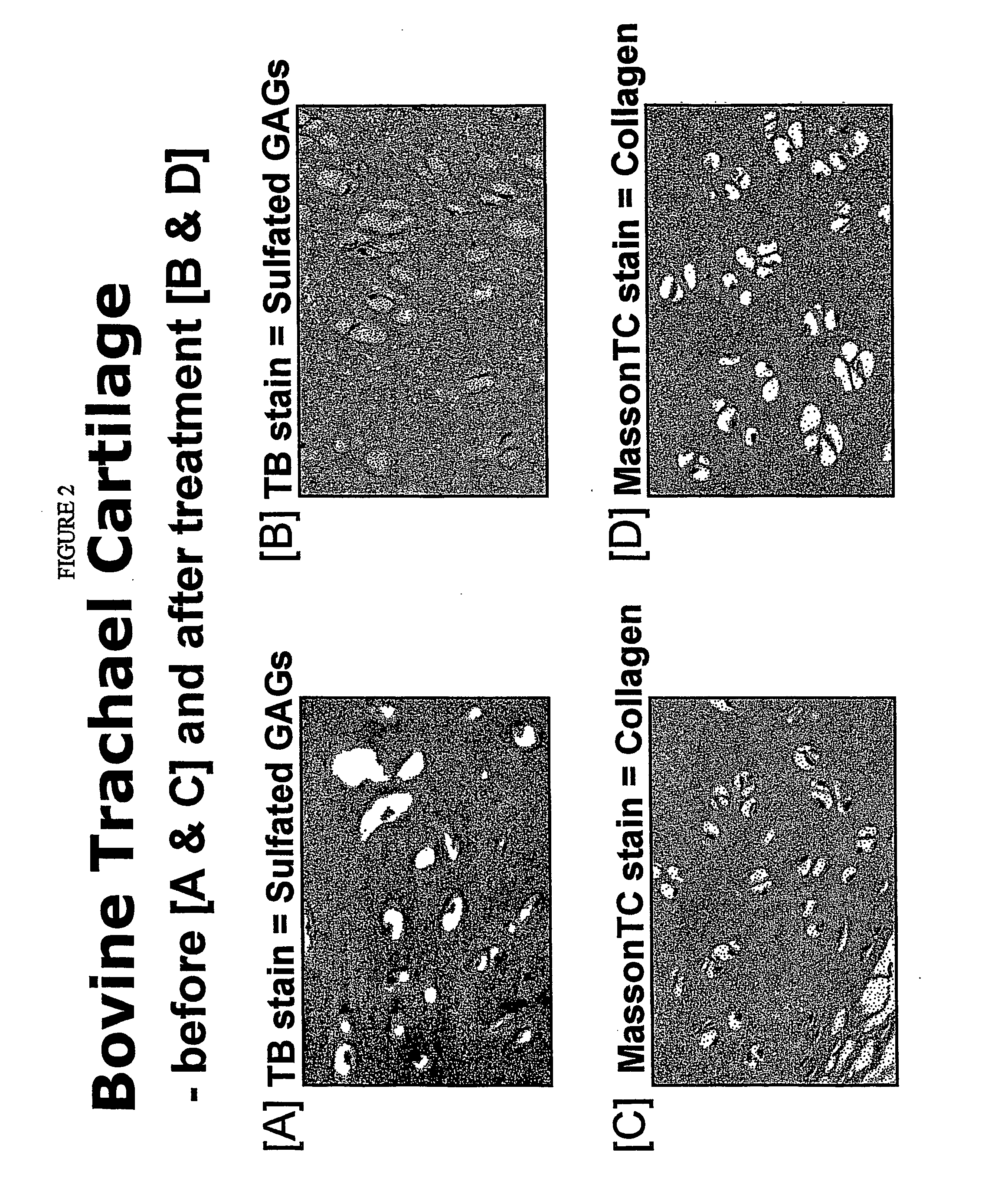Nutraceuticals for the treatment, protection and restoration of connective tissues
a technology of connective tissue and nuts, applied in the field of nutsraceuticals for the treatment, protection and restoration of connective tissue, can solve the problems of affecting the health of the human body, so as to improve the anabolism of connective tissue cells and cell biosynthesis. the effect of enhancing the anabolism
- Summary
- Abstract
- Description
- Claims
- Application Information
AI Technical Summary
Benefits of technology
Problems solved by technology
Method used
Image
Examples
Embodiment Construction
[0098] Abbreviations and Definitions:
[0099] In order to avoid repetition and improve the clarity of this description of the products isolated from cartilages by the methods of the invention they have been abbreviated and given the collective title of PEPTACANS (P). The different Peptacans isolated by the methods herein are identified by the addition of prefixes, Thus:
[0100] Calcium Peptacan (CaP)—is the aqueous soluble product obtained by subjecting bovine tracheal cartilage powder to autolysis at 37° C. with 0.1 M calcium acetate at pH 4.5.
[0101] Sodium Peptacan (NaP)—is the aqueous soluble product obtained by subjecting bovine tracheal cartilage powder to autolysis at 37° C. with 0.1 M sodium acetate at pH 4.5.
[0102] Water Peptacan (H2OP)—is the aqueous soluble product obtained by subjecting bovine tracheal cartilage powder to autolysis at 37° C. with dilute acetic acid pH at 4.5
[0103] dCaP—is CaP dialysed against H2O
[0104] dNaP—is NaP dialysed against H2O
[0105] dH2OP—is H2...
PUM
| Property | Measurement | Unit |
|---|---|---|
| temperature | aaaaa | aaaaa |
| temperature | aaaaa | aaaaa |
| temperature | aaaaa | aaaaa |
Abstract
Description
Claims
Application Information
 Login to View More
Login to View More - R&D
- Intellectual Property
- Life Sciences
- Materials
- Tech Scout
- Unparalleled Data Quality
- Higher Quality Content
- 60% Fewer Hallucinations
Browse by: Latest US Patents, China's latest patents, Technical Efficacy Thesaurus, Application Domain, Technology Topic, Popular Technical Reports.
© 2025 PatSnap. All rights reserved.Legal|Privacy policy|Modern Slavery Act Transparency Statement|Sitemap|About US| Contact US: help@patsnap.com



